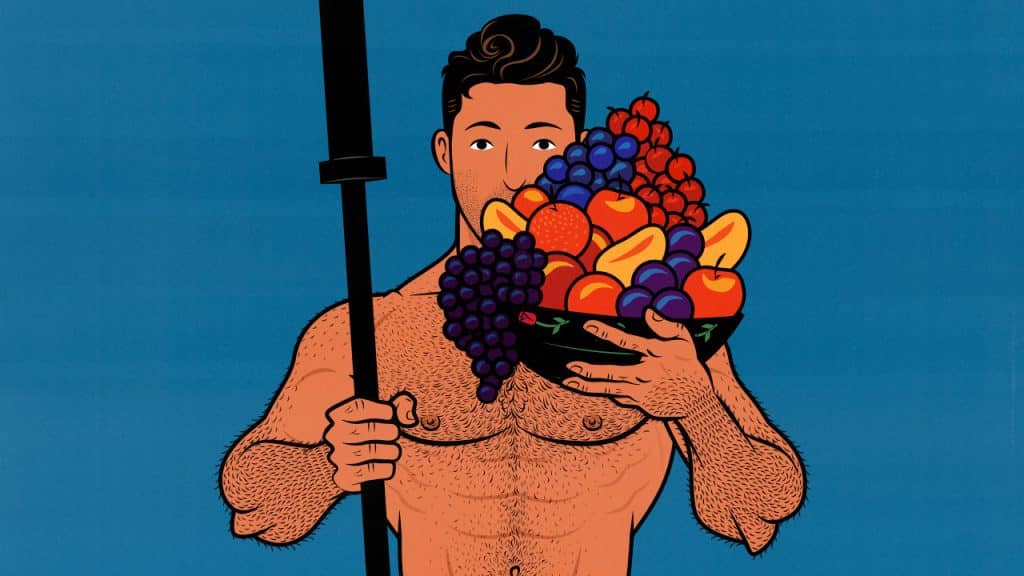
How to Clean Bulk: The Nutritious Way of Building Muscle
Clean bulking is when you approach bulking with a monk’s asceticism, eating only the purest foods and carefully avoiding culinary hedonism. It may sound like I’m poking fun. That’s true. But there’s also truth to be found in clean bulking. There are no shades of grey. No nuance. This is often presented as a negative, but it also makes the diet simpler to learn and easier to follow.
Clearer boundaries are easier to stay within. Instead of trying to limit your junk food, you avoid it entirely. Foods like pasta and bread are neither whole nor wholly processed. These are grey foods. They have no place in a clean diet. There’s a simplicity here. Eat this, not that. It works.
Perhaps most importantly, clean bulking diets are nutritious. They aren’t necessarily more nutritious than balanced bulking diets, but eating clean is certainly a healthy way of eating. If it works for you, there’s plenty of upside with very little downside.
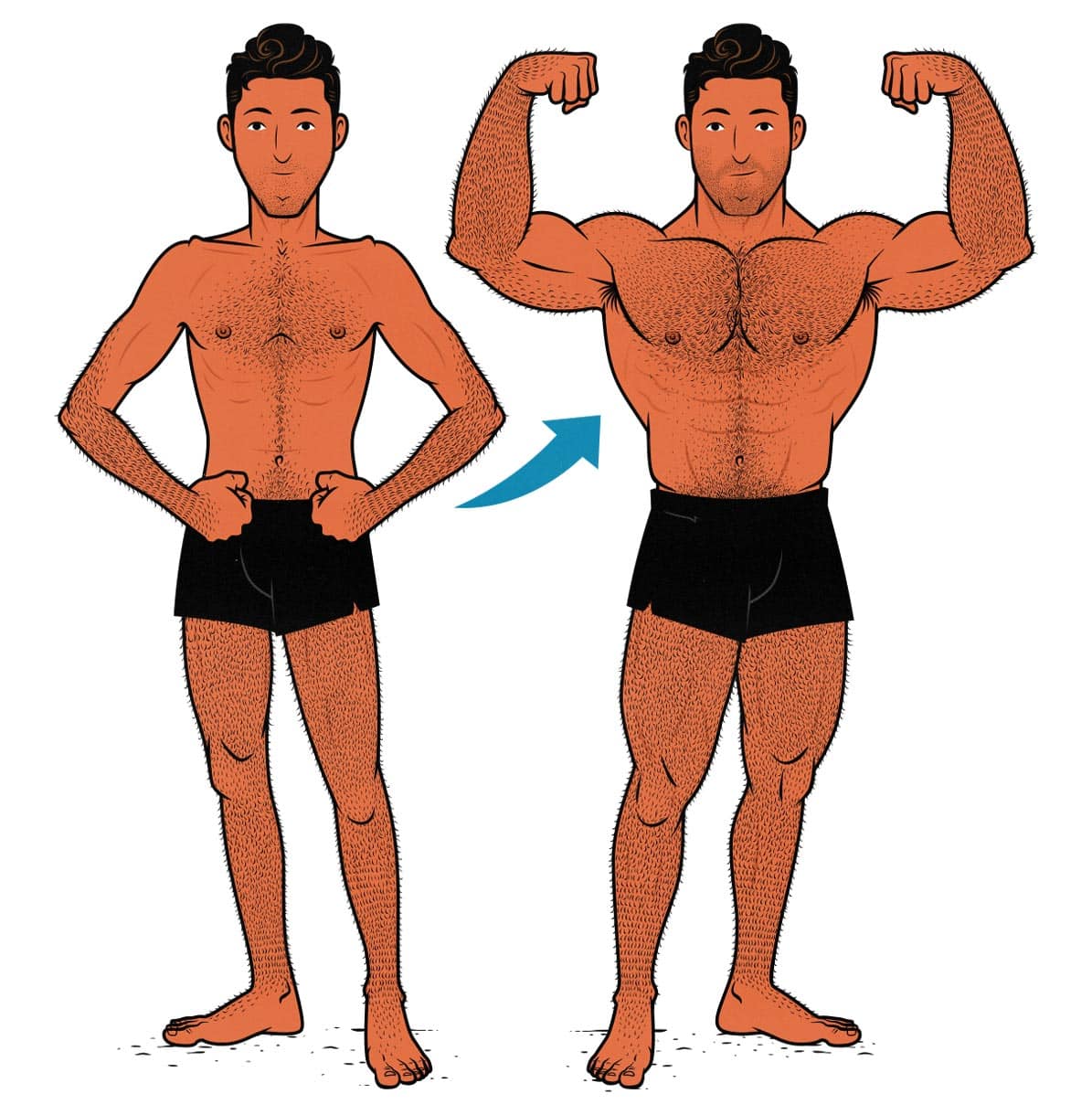
What is Clean Bulking?
Clean bulking is when you eat in a calorie surplus to build muscle and gain weight. What separates it from dirty bulking and balanced bulking is that your diet must be “clean”—made entirely of nutritious whole foods.
Clean Bulking vs Lean Bulking
Clean bulking and lean bulking aren’t the same thing. Clean bulking is when you eat “clean” foods to improve the nutritiousness of your diet. It’s about the quality of the calories you eat. Lean bulking is when you eat in a small calorie surplus to keep your gains leaner. It’s about the quantity of the calories you eat.
You can bulk cleanly and quickly, slowly and leanly, or anything in between. Mind you, most people who want to bulk cleanly also want to bulk leanly. They’re both meticulous, diligent approaches to building muscle. People who like one tend to like both.
Who Should Eat a Clean Bulking Diet?
Clean bulking works best for people who prefer clear boundaries and strict rules. It also works well for people with naturally larger appetites, as it helps to calm rapacious hunger.
Every bulking diet should be built on a foundation of nutritious foods. A common goal is to get 80–90% of your calories from minimally processed, whole foods. Clean bulking takes that two steps further. First, it cuts out junk food entirely. Then, it removes morally “grey” foods like white rice, white pasta, and white potatoes. Ironically, this morally white approach to nutrition has very little white in it (except for cauliflower, of course).
Since any good bulking diet is nutritious, clean bulking doesn’t offer much of a health advantage. It doesn’t provide better results, either. It’s just a different way of setting boundaries, managing your appetite, and eating a healthy diet.
Swapping out white rice for brown rice, white potatoes for sweet potatoes, or spaghetti with meatballs for chili con carne is all perfectly fine. It isn’t necessary, but it definitely doesn’t hurt. For many, it’s a simpler, easier way to eat a nutritious diet.
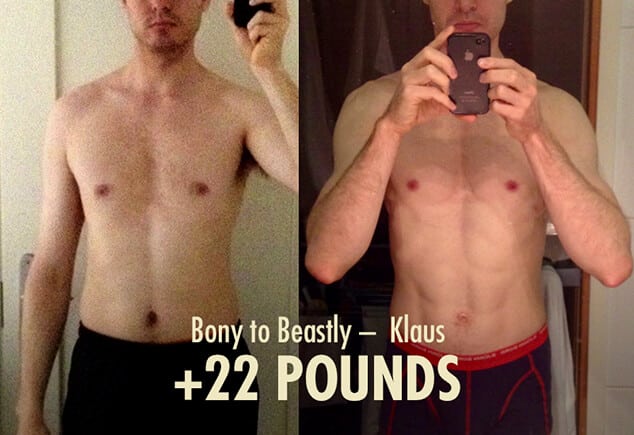
How to Do a Clean Bulk
The Workout Program
The whole purpose of clean bulking is to build muscle. To do that, you have to start by stimulating muscle growth. That way, the extra calories you eat get invested into building muscle instead of simply being stored as fat. Hypertrophy training is the best way to stimulate muscle growth.
There are plenty of good training splits for building muscle, but beginners usually do best by starting with a 3-day full-body workout routine. Full-body workouts are a tremendously powerful way to stimulate muscle growth in every muscle at once.
Once you’ve started stimulating muscle growth, you need to fuel that muscle growth by eating a bigger diet. That way, you show up to your next workout bigger and stronger, able to outlift your previous self. This is called progressive overload, and it’s the heart of building muscle.
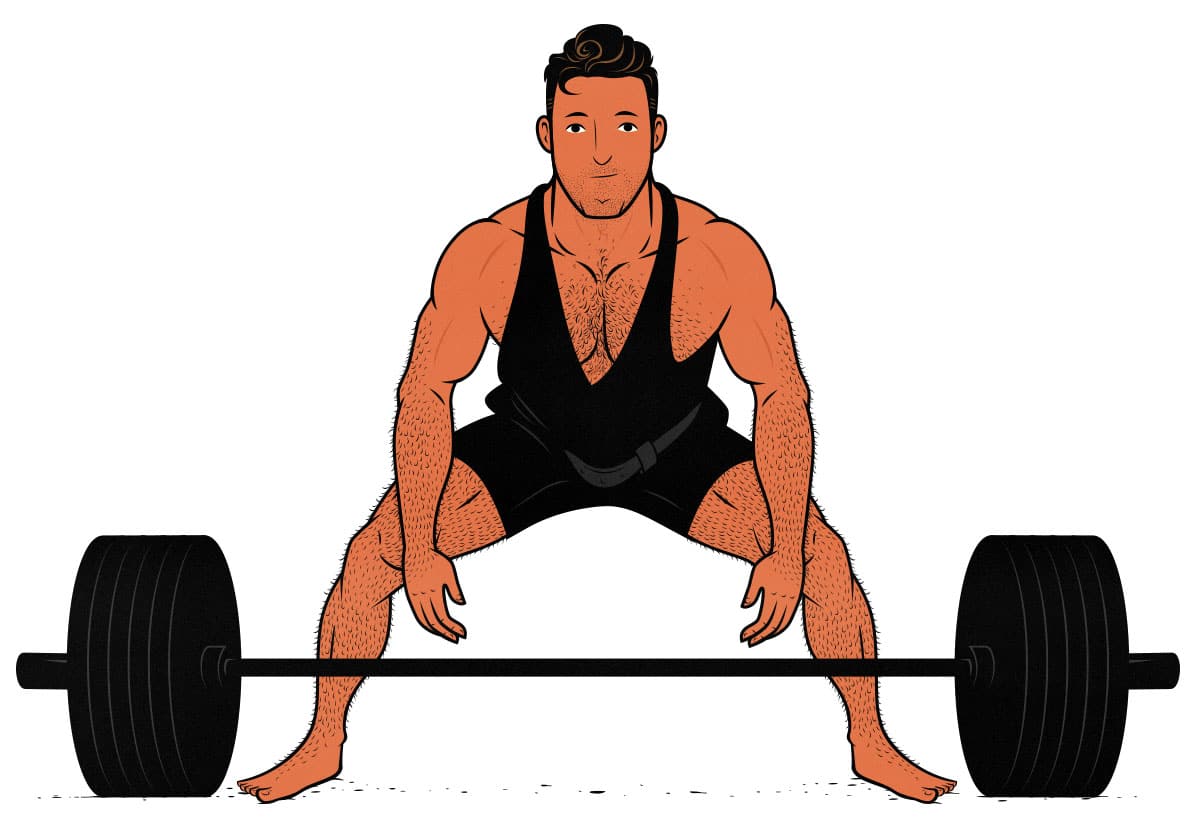
The Calorie Surplus
It takes 1,500–2,500 calories to build a pound of muscle (research breakdown). Overweight people can get those extra calories from their body fat. Thinner people need to get those extra calories from their diets. That’s what bulking is all about, and clean bulking is no different.
The goal is to choose a calorie surplus that aligns your rate of weight gain with your predicted rate of muscle growth. That way, you maximize your rate of muscle growth without leaving too many extra calories to spill over into fat gain.
However, even if you track your calories and gain weight at the perfect speed, there’s always a tradeoff. You always need to choose between eating more calories to build muscle faster (an aggressive bulk) or eating fewer calories to build muscle more leanly (a lean bulk). Most people take the middle road, doing a classic bulk.
There are two good ways to get into a calorie surplus:
- Add food to a steady diet: if you eat similarly sized meals on a consistent schedule, all you need to do is increase your serving sizes or add in a snack. This is the method I use. It works very well with clean bulking.
- Track your calories: plug the foods you eat into a calorie-tracking app, and try to hit your daily calorie targets. This method is more precise and does a great job of teaching you about the calorie contents and nutritiousness of the food you eat. We’re affiliated with MacroFactor. We found it to be the best calorie-tracking app for building muscle. If you want to try it, you can get an extended free trial with the code “b2b”.
Whichever method you choose, you’ll need to weigh yourself every week and adjust your calorie intake based on how much weight you’re gaining. If you aren’t gaining weight, add another 200 calories. If you’re gaining weight too quickly, remove 100 calories. Keep weighing yourself and adjusting.
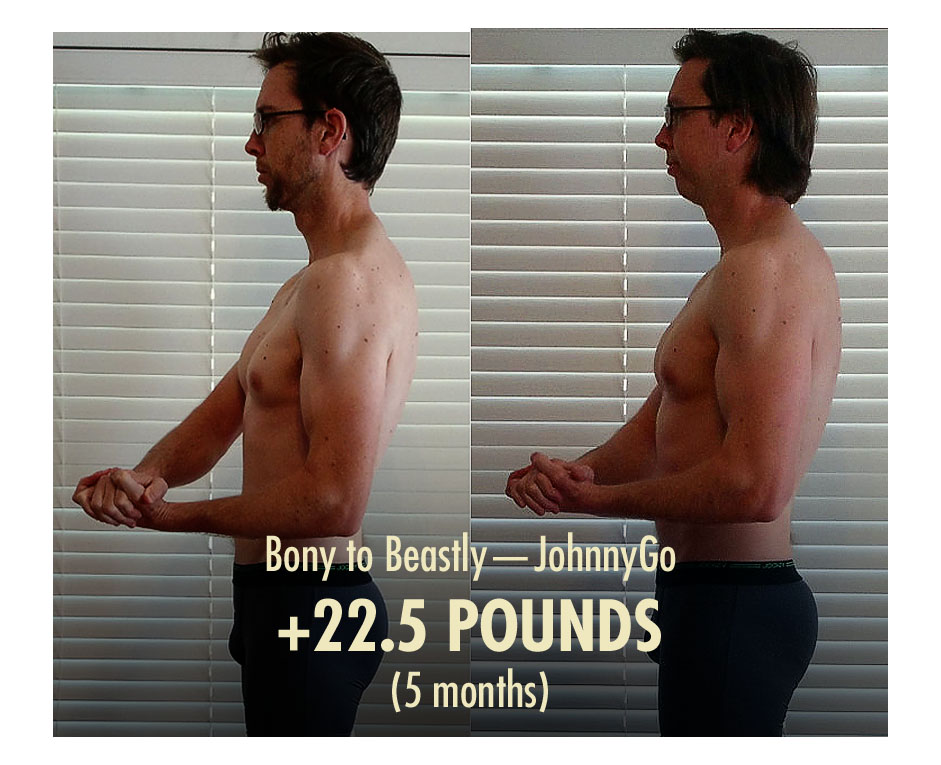
The Clean Bulking Diet
When you’re eating a clean diet, you’ll naturally gravitate towards more nutritious foods. Even so, it’s still important to strive for balance. Try to have a source of protein, some nutritious carbs, some healthy fats, and plenty of fibre. Ideally, you want a nice mix of probiotics and micronutrients, too.
- Eat high-quality protein: Proteins are the stones that make up your castle of muscle. Calories give the masons the energy they need to build that castle. You need enough of both. When lean bulking, aim for at least 0.7 grams of protein per pound of body weight per day. Think of lean meats, fish, poultry, eggs, Greek yogurt, legumes, soy, whole grains, peas, nuts, and seeds.
- Eat healthy fats: Fat is a great source of calories, it can be rich in fat-soluble micronutrients, and it supports hormone production. Try to get most of your fats from nutritious sources like fatty fish, dark chocolate, nuts, seeds, avocados, and olives (and olive oil).
- Eat plenty of carbohydrates: Carbs can be a great energy source, they’re often high in fibre, and they can be packed full of micronutrients. Think of carbs like fruits, berries, vegetables,
potatoes, sweet potatoes, legumes, squash, honey, and whole grains (like brown rice, corn, oats, and quinoa). - Eat as much fibre as you can stomach: Fibre is fantastic for your health and digestion, and it helps you regulate your blood sugar and blood lipids. Many carbs are rich in fibre. So are many nuts and seeds.
- Eat some fermented foods: Fermented foods are rich in probiotics, which can bulk up your gut microbiome, strengthening your digestive system. Think of foods like Greek yogurt, kimchi, kefir, and sauerkraut.
- Drink water, smoothies, coffee, and tea.
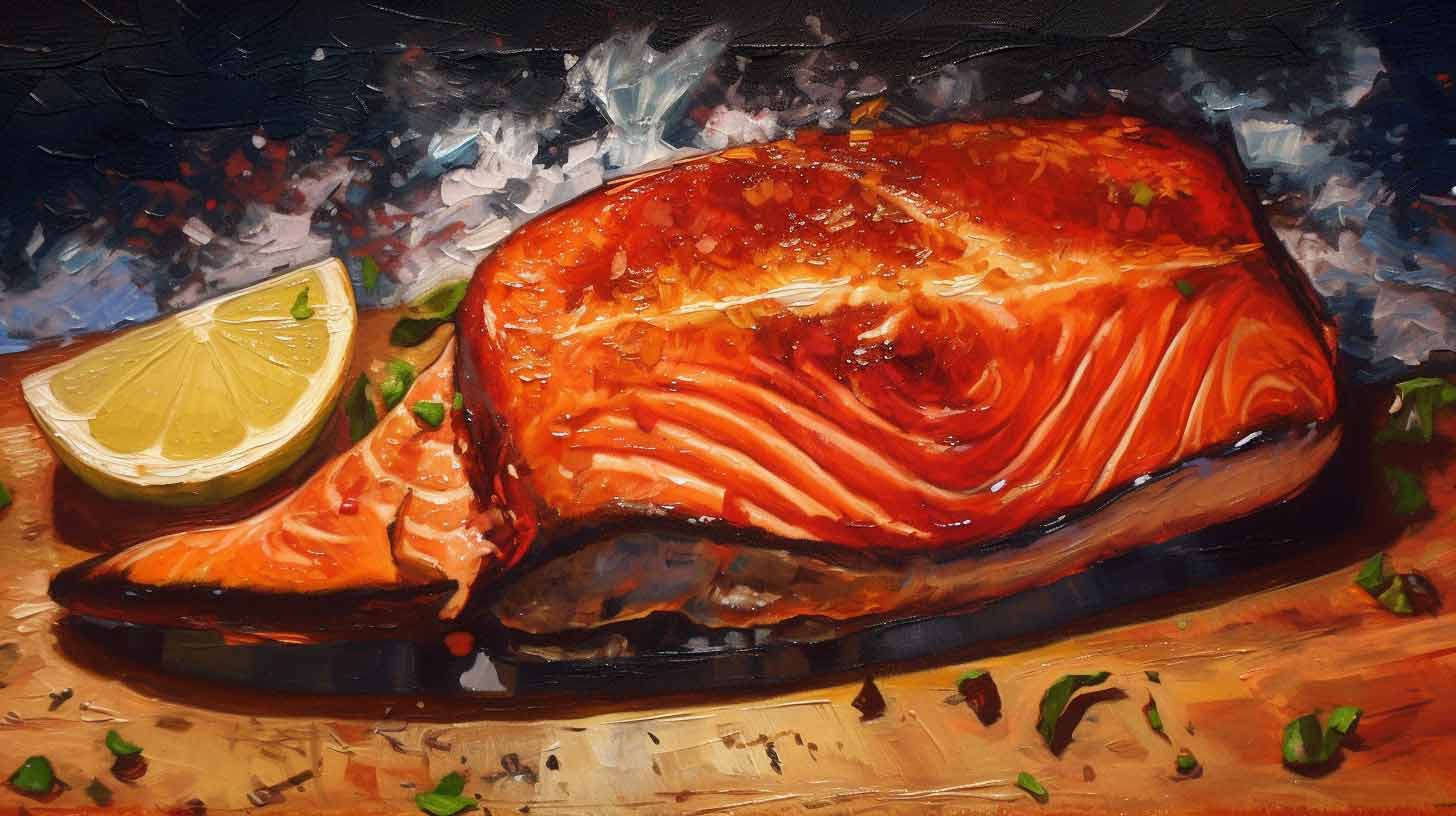
The Best Clean Bulking Foods
The classic clean-bulking foods are chicken breast, broccoli, and brown rice. Some other staples include salmon, tuna, Greek yogurt, extra-lean ground beef, beans, lentils, oats, quinoa, pumpkin, spinach, kale, mixed berries, mixed nuts, and extra-virgin olive oil.
Here’s a more robust list of ideas:
- Lean meats (chicken, turkey, lean beef): These are excellent sources of protein, which is essential for muscle growth and repair. Meat is also rich in micronutrients. The only downside is that meat fat tends to be high in saturated fat. That’s why it’s usually recommended to eat leaner cuts of meat, especially if you’re eating a lot of it.
- Fish (salmon, tuna, tilapia): Fish is a lean source of protein that also provides healthy omega-3 fatty acids, which can help reduce inflammation and support overall health. This is where you want to get more of your animal fat from.
- Eggs: Eggs whites are a complete protein source. Egg yolks are rich in healthy fats and micronutrients.
- Dairy products (Greek yogurt, kefir, and perhaps cheese): These are good sources of protein and calcium, which are important for bone health. They’re also good sources of probiotics, which is good for digestive health. Note that cheese isn’t always considered clean.
- Whole grains and legumes (such as brown rice, corn, quinoa, oats, beans, lentils, and soy): Whole grains and legumes are a good source of complex carbohydrates, which provide sustained energy for workouts and help support muscle growth. They’re also rich in soluble fibre, which is great for improving blood sugar, blood lipids, and digestion.
- Fruits and vegetables (such as berries, bananas, mangoes, spinach, and broccoli): These provide a wide range of micronutrients, such as vitamins, minerals, and antioxidants. They’re fantastic sources of insoluble fibre, which is great for general health and digestion. They’re also rich in nitrates, which are good for improving muscle pumps and muscle growth. Note that white potatoes aren’t always considered clean.
- Nuts and seeds (almonds, walnuts, chia seeds): These are good sources of healthy fats, protein, and fibre. This is one of the best places to get dietary fat.
- Extra-virgin olive and avocado oil: Extra virgin olive oil is great for drizzling on salads and veggies. Avocado oil is great for cooking with. These tend to be the cleanest oils.
- Coffee and tea: These are natural sources of caffeine, and they’re also rich sources of phytonutrients. They tend to be quite healthy. Just watch out not to consume them within a few hours of your bedtime, lest they interfere with your sleep.
The Best Clean Bulking Meals
There are many, many balanced meals you can pick between. Our Bony to Beastly Program includes a full recipe book full of them. Here are some classic clean bulking meal ideas:
- Chicken breast, broccoli, and brown rice: This is the classic clean bulking meal. Chicken breast is a great source of protein, broccoli is rich in fibre, and brown rice is a nutritious source of carbs. The meal is balanced. All three of these ingredients are full of micronutrients. You can toss everything in olive oil and spices before cooking them.
- Chile con carne: this is my favourite bulking meal. Lean ground meat is a great source of protein, beans and corn are nutritious sources of carbs and fibre, onions are great for digestion, garlic is great for immunity and blood flow, and the list of benefits goes on. Best of all, if you’ve got a big enough pot, you can cook up a dozen servings in half an hour, giving you a full week of leftovers.
- Greek yogurt with frozen berries and mixed nuts: my favourite bulking dessert. It’s high in protein, a good source of carbs and fat, and rich in fibre and micronutrients. I’ll often have it with a dollop of honey or a scattering of dark chocolate chips instead of mixed nuts.
Feel free to create variations on these meals. For example, instead of chicken, rice, and broccoli, you could have salmon, asparagus, and sweet potato wedges, all baked in the oven in the same pan. Instead of chili con carne, you could make a vegan lentil stew. Instead of Greek yogurt with frozen berries, you could have cottage cheese with sliced fruit.
Conclusion
Clean bulking is a simple, strict, and nutritious approach to bulking. It’s especially effective for people who tend to overeat. It can also work quite well for skinny-fat people. If you decide to do a clean bulk, follow a good workout program, eat a nutritious diet, and live a healthy lifestyle.

Alright, that’s it for now. If you want to know the ins and outs of bulking up, we have a free newsletter. If you want a full muscle-building program, including a 5-month workout routine, a bulking diet guide, a gain-easy recipe book, and online coaching, check out our Bony to Beastly Bulking Program. Or, if you want a customizable intermediate bulking program, check out our Outlift Program.
Shane Duquette is the founder of Outlift, Bony to Beastly, and Bony to Bombshell, each with millions of readers. He's a Certified Conditioning Coach (CCC), has gained 70 pounds, and has over a decade of experience helping more than 15,000 people build muscle. He also has a degree in fine arts, but those are inversely correlated with muscle growth.

Muscle-Building Mini-Course via Email
Sign up for our 5-part muscle-building mini-course that covers everything you need to know about:
Here are some related articles